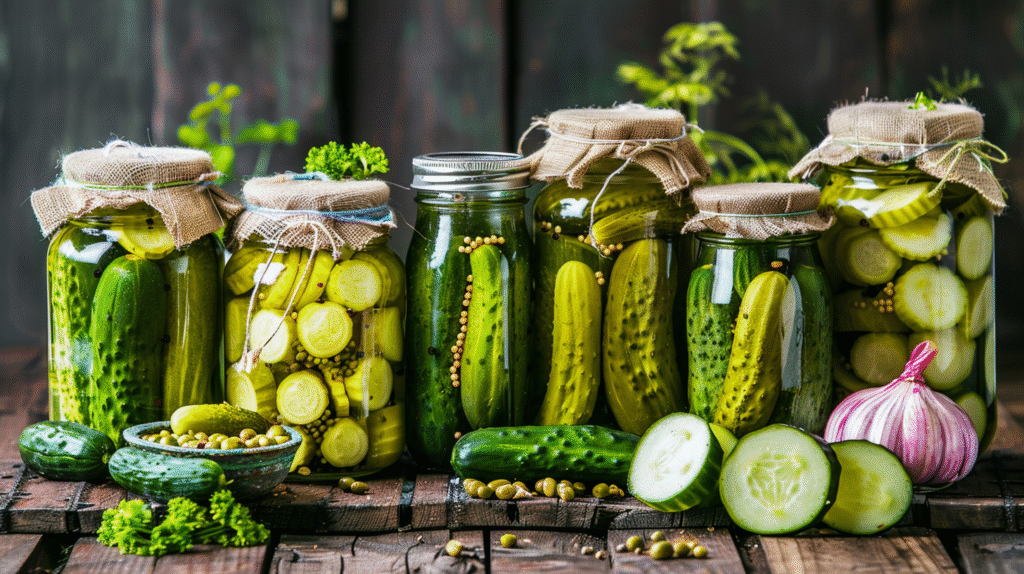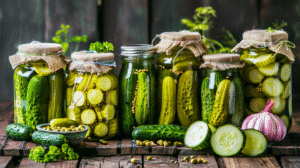Creating perfect sour cucumber pickles at home transforms ordinary cucumbers into tangy, flavorful treats that pack a punch. Furthermore, this comprehensive guide covers everything from selecting the right cucumbers to mastering fermentation techniques. Additionally, you’ll discover time-tested methods that create the perfect balance of sourness and crunch. Moreover, we’ll address common questions about pickle-making while sharing professional tips that guarantee success every time.
PART 1: Understanding What Makes Sour Cucumber Pickles Special
The Science Behind Pickle Sourness
The sourness in pickles comes from lactic acid fermentation, a natural process that transforms simple vegetables into complex, flavorful foods. Consequently, beneficial bacteria convert sugars in cucumbers into lactic acid, creating that distinctive tangy taste. Meanwhile, this process also preserves the vegetables naturally, extending their shelf life significantly.
Salt concentration plays a crucial role in controlling fermentation speed and final flavor intensity. Therefore, the right salt-to-water ratio encourages beneficial bacteria while preventing harmful microorganisms from taking over. Additionally, temperature affects fermentation rate, with warmer conditions speeding up the process.
Traditional vs Modern Pickle-Making Methods
Traditional pickle-making relies on natural fermentation, a method our ancestors used for centuries. However, modern techniques often incorporate vinegar for quicker results and consistent sourness levels. Nevertheless, both approaches produce delicious results when executed properly.
Natural fermentation creates more complex flavors through the slow development of beneficial bacteria colonies. Conversely, vinegar-based methods offer predictable results and faster preparation times. Still, many pickle enthusiasts prefer the depth of flavor that comes from traditional fermentation methods.
PART 2: Essential Ingredients for Perfect Sour Pickles
Choosing the Right Cucumbers for Pickling
Selecting proper cucumbers makes the difference between crispy, satisfying pickles and disappointing, mushy results. Therefore, choose firm, fresh cucumbers without soft spots or yellowing. Additionally, smaller cucumbers typically produce better pickles because they maintain their crunch throughout the fermentation process.
Pickling cucumbers work best because they have thicker skins and fewer seeds than regular slicing varieties. However, if pickling cucumbers aren’t available, small regular cucumbers can substitute successfully. Furthermore, harvest or purchase cucumbers as close to pickling time as possible for optimal results.
Salt Selection and Its Impact on Flavor
Non-iodized salt works best for pickle-making because iodine can interfere with fermentation processes. Consequently, sea salt, kosher salt, or pickling salt produces superior results compared to regular table salt. Moreover, these salts dissolve more evenly and don’t contain anti-caking agents that might cloud your brine.
The salt concentration directly affects both preservation and taste development. Therefore, too little salt allows harmful bacteria to flourish, while too much salt slows fermentation excessively. Additionally, measuring salt accurately ensures consistent results batch after batch.
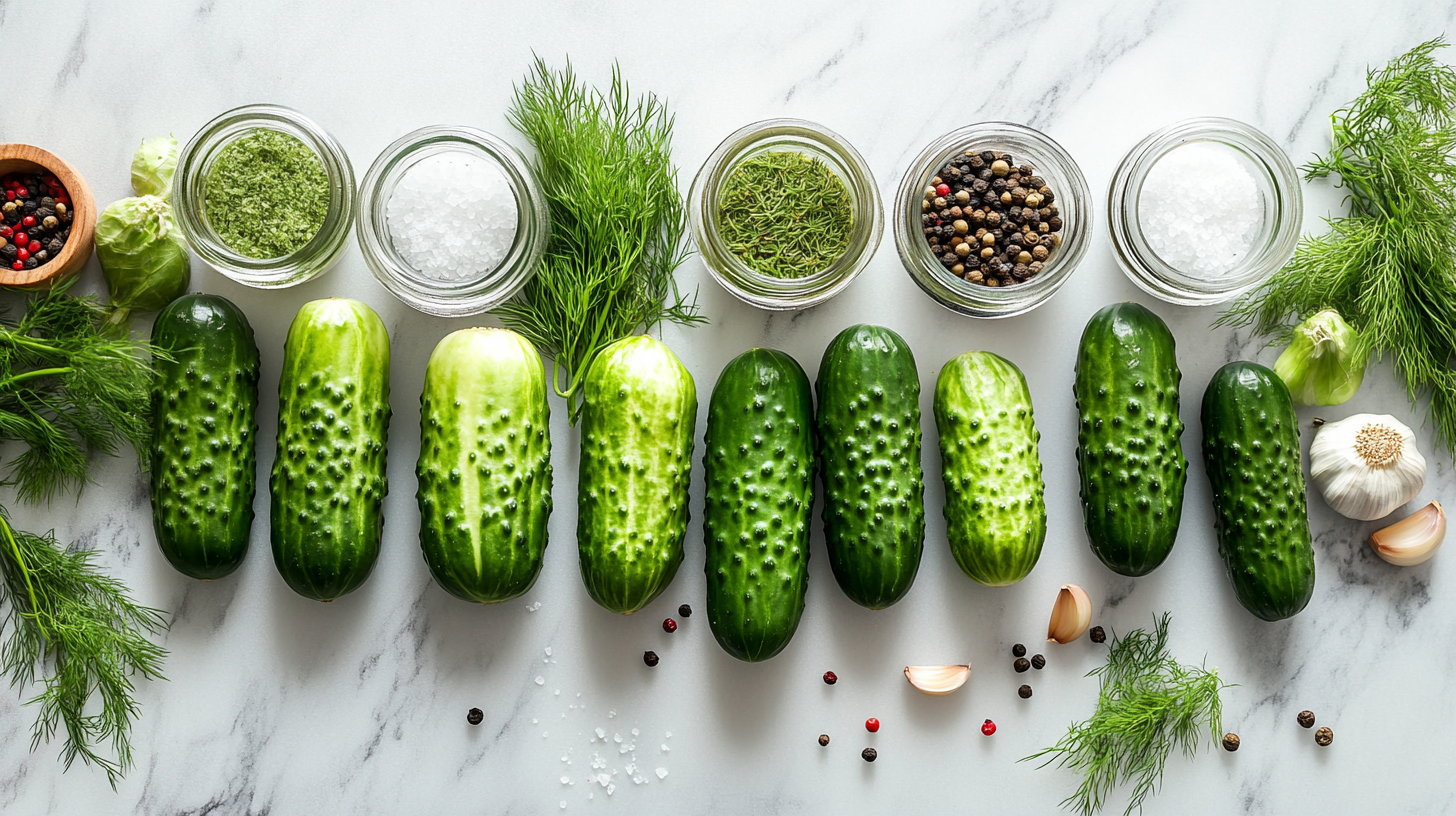
PART 3: The 321 Rule and Other Pickle-Making Techniques
Understanding the 321 Pickle Rule
The 321 rule refers to a quick pickle method using 3 parts vinegar, 2 parts water, and 1 part sugar. However, this ratio creates sweet-and-sour pickles rather than purely sour ones. Nevertheless, understanding this baseline helps you adjust recipes to achieve your preferred flavor profile.
For purely sour pickles, reduce or eliminate sugar while increasing vinegar concentration. Additionally, adding extra salt helps balance the acidity while supporting fermentation. Furthermore, experimenting with different vinegar types creates unique flavor variations.

Advanced Fermentation Techniques
Controlled fermentation produces consistently sour pickles with complex flavor development. Therefore, maintaining steady temperatures between 68-72°F creates optimal conditions for beneficial bacteria. Additionally, using a fermentation weight keeps cucumbers submerged below brine level, preventing mold formation.
Monitoring fermentation progress through daily taste tests helps you stop the process at your preferred sourness level. Consequently, some people prefer mildly tangy pickles, while others enjoy intensely sour results. Moreover, transferring finished pickles to refrigerated storage slows fermentation while maintaining flavor.
PART 4: Step-by-Step Sour Pickle Making Process
Preparing Cucumbers and Equipment
Start by washing cucumbers thoroughly and trimming both ends to remove any bitter compounds. Subsequently, cut cucumbers into desired shapes – spears, chips, or leave small ones whole. Additionally, sterilize all equipment including jars, lids, and utensils to prevent unwanted bacteria.
Prepare your workspace by gathering all ingredients and tools before beginning. Furthermore, having everything ready streamlines the process and reduces contamination risks. Also, prepare your brine solution by dissolving salt completely in water before adding other seasonings.
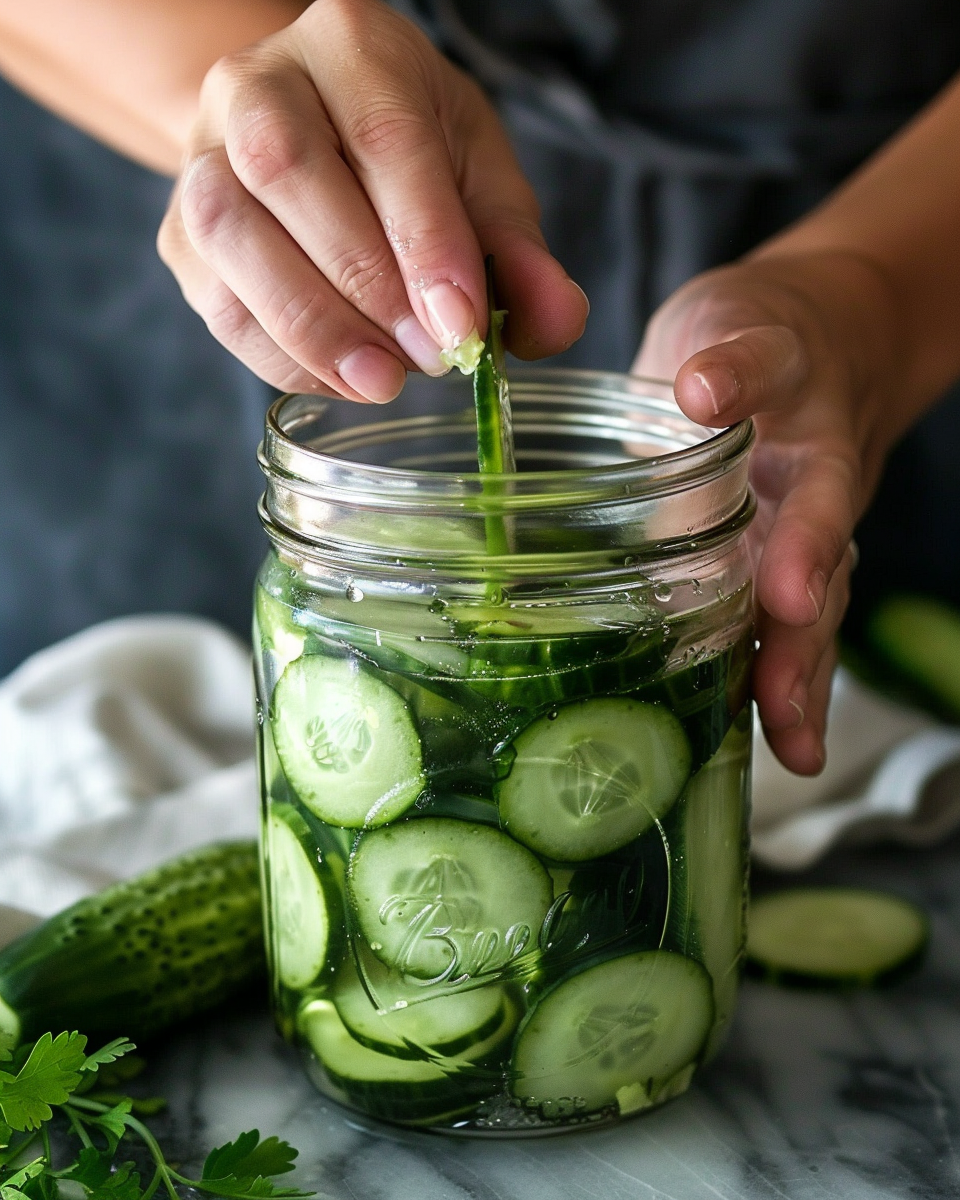
Creating the Perfect Brine Solution
Mix non-chlorinated water with salt at a 3.5% concentration for traditional fermentation. Therefore, use 35 grams of salt per liter of water, or roughly 2 tablespoons per quart. Additionally, add garlic, dill, peppercorns, or other desired seasonings to the brine.
Heat water slightly to help salt dissolve completely, but cool to room temperature before adding to cucumbers. Consequently, hot brine can cook vegetables slightly, affecting final texture. Moreover, proper brine concentration creates the ideal environment for beneficial lactic acid bacteria.
PART 5: Troubleshooting Common Sour Pickle Problems
Preventing Mushy Pickle Texture
Mushy pickles result from several factors including overripe cucumbers, excessive heat, or insufficient salt concentration. Therefore, choose firm, fresh cucumbers and maintain proper brine ratios throughout fermentation. Additionally, adding tannins from grape leaves, oak leaves, or black tea helps maintain crispness.
Proper storage temperature prevents over-fermentation that leads to soft textures. Furthermore, transferring pickles to cold storage when they reach desired sourness stops the softening process. Also, avoid disturbing fermenting pickles unnecessarily, as agitation can break down cell walls.
Managing Fermentation Speed and Sourness Levels
Temperature control directly affects how quickly pickles develop sourness and reach completion. Consequently, cooler temperatures slow fermentation, while warmer conditions accelerate the process. Therefore, adjust storage location based on your timeline preferences.
Taste-testing every few days helps you determine optimal sourness levels for your preferences. Additionally, removing pickles from fermentation when they reach desired tanginess prevents over-souring. Moreover, understanding that fermentation continues slowly even in refrigeration helps with long-term storage planning.
PART 6: Flavor Variations and Creative Additions
Spice Combinations for Enhanced Sour Pickles
Dill remains the classic pickle seasoning, but numerous other herbs and spices create interesting flavor profiles. Furthermore, garlic adds depth while peppercorns contribute heat and complexity. Additionally, coriander seeds, mustard seeds, and bay leaves each bring unique characteristics to your pickles.
Experimenting with spice combinations helps you develop signature pickle recipes that reflect your taste preferences. Therefore, start with small batches when testing new combinations to avoid wasting ingredients. Moreover, keeping detailed notes about successful experiments helps you replicate favorite flavors.
Regional Pickle Styles and Techniques
Different cultures have developed unique approaches to pickle-making that reflect local ingredients and preferences. Consequently, German-style pickles often include caraway seeds and onions, while Polish varieties feature more garlic and dill. Additionally, Asian-inspired pickles might incorporate ginger, chili flakes, or rice vinegar.
Learning from various pickle traditions expands your flavor repertoire and introduces new techniques. Therefore, researching international pickle recipes provides inspiration for creative variations. Furthermore, adapting traditional recipes to use locally available ingredients often produces excellent results.
PART 7: Storage and Safety Considerations
Proper Storage Methods for Homemade Pickles
Refrigerated storage works best for maintaining pickle quality and safety after fermentation completion. Therefore, transfer finished pickles to clean jars and cover completely with brine before refrigerating. Additionally, properly stored pickles maintain quality for several months when kept consistently cold.
Freezing isn’t recommended for pickles because it damages texture and creates mushy results after thawing. However, pickle brine can be reused for additional batches if it remains clear and odor-free. Furthermore, always use clean utensils when removing pickles to prevent contamination.
Food Safety Guidelines for Home Fermentation
Maintaining proper pH levels ensures safe fermentation and prevents harmful bacteria growth. Consequently, finished pickles should have a pH below 4.6 for safe storage. Additionally, signs of proper fermentation include tangy smell, slightly cloudy brine, and firm vegetable texture.
Watch for warning signs including off odors, slimy textures, or unusual colors that indicate spoilage. Therefore, discard any batch showing these signs rather than risking foodborne illness. Moreover, following established recipes and maintaining clean conditions minimizes safety risks significantly.
PART 8: Health Benefits and Nutritional Value
Probiotic Benefits of Fermented Sour Pickles
Naturally fermented pickles contain beneficial bacteria that support digestive health and immune system function. Furthermore, these probiotics help maintain healthy gut flora balance, which affects overall wellbeing. Additionally, fermented foods have been linked to improved nutrient absorption and reduced inflammation.
Regular consumption of fermented pickles may contribute to better digestive health compared to vinegar-based varieties. Therefore, choosing naturally fermented options provides maximum probiotic benefits. However, pasteurized commercial pickles don’t contain live bacteria, so homemade versions offer superior health advantages.
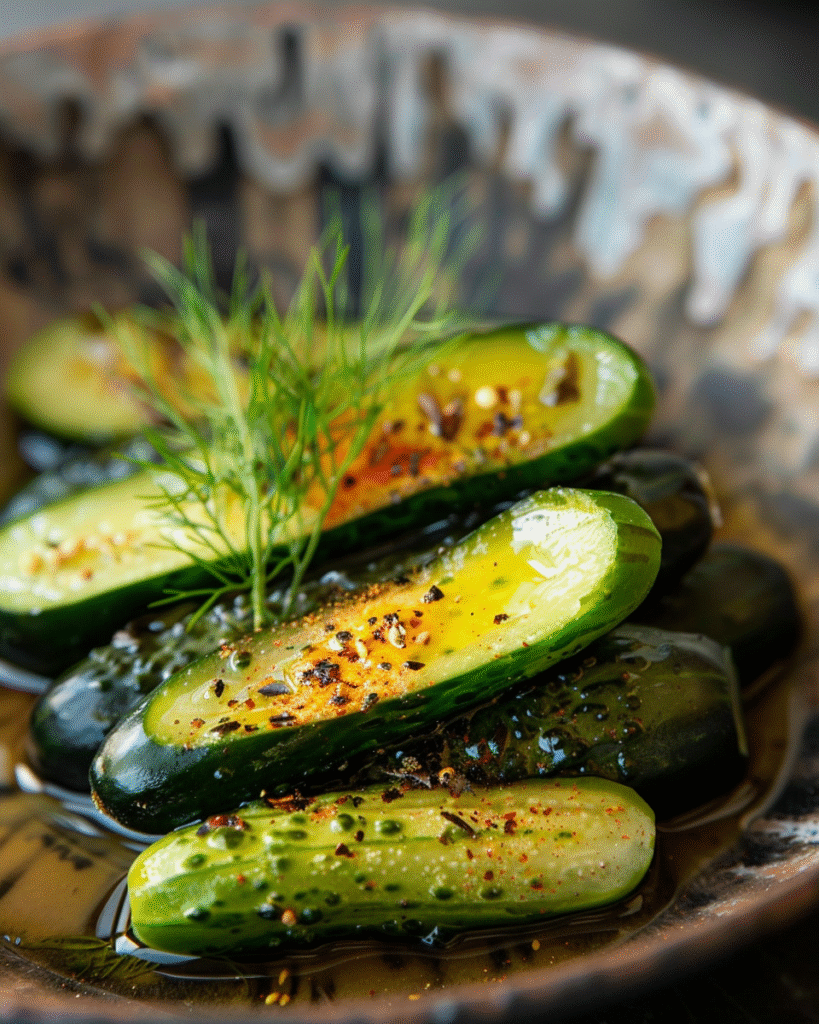
Nutritional Content and Dietary Considerations
Pickles provide vitamins K and C while remaining very low in calories, making them excellent snack options. Additionally, the fermentation process can increase certain nutrient levels while breaking down compounds that might cause digestive issues. Furthermore, pickles contribute to daily vegetable intake goals.
However, pickles are high in sodium, which requires consideration for people managing blood pressure or following low-sodium diets. Therefore, enjoy pickles in moderation as part of a balanced diet. Moreover, rinsing pickles before eating can reduce sodium content if necessary.
Frequently Asked Questions
What makes a pickle more sour? Longer fermentation time, higher acid content, and specific bacterial strains make pickles more sour. Additionally, temperature affects acid production rates, with warmer conditions generally producing more sourness faster. The type of bacteria present and available sugars for fermentation also influence final acidity levels.
What is the 321 rule for pickles? The 321 rule refers to a quick pickle brine ratio of 3 parts vinegar, 2 parts water, and 1 part sugar. However, this creates sweet-and-sour pickles rather than purely sour ones. For increased sourness, reduce sugar content and increase vinegar proportion in the mixture.
Is a pickle a sour cucumber? Yes, a pickle is essentially a sour cucumber that has been preserved through fermentation or vinegar treatment. The cucumber transforms during the pickling process, developing complex flavors and extended shelf life while maintaining its basic structure and nutritional benefits.
How to make pickle sour? Increase fermentation time, use less sugar, add more vinegar, or include additional acid sources like lemon juice. Furthermore, maintaining proper fermentation conditions encourages beneficial bacteria that produce lactic acid naturally. Temperature control and salt concentration also affects final sourness levels.

Ingredients
Equipment
Method
- Wash cucumbers thoroughly under cold running water and trim 1/4 inch from both endsCut cucumbers into spears, rounds, or leave small ones whole as desiredSterilize 2 quart-sized mason jars and lids by submerging in boiling water for 10 minutesCreate brine by dissolving salt completely in filtered water, stirring until clearPack cucumbers tightly into sterilized jars, leaving 1 inch headspace at topAdd garlic cloves, dill, peppercorns, coriander seeds, and bay leaves to each jarPour brine over cucumbers, ensuring they're completely covered by at least 1/2 inchPlace grape leaf or tea bag on top of cucumbers to provide tannins for crispnessWeight down cucumbers with fermentation weight, clean stone, or small glass jarCover jar opening with clean cloth or coffee filter, secure with rubber bandPlace jars in cool, dark location away from direct sunlight (68-72°F ideal)Allow to ferment for 3-7 days, tasting daily after day 3 to check sourness levelTransfer to refrigerator when desired tanginess is reached to slow fermentationStore in refrigerator for up to 6 months, keeping cucumbers submerged in brinenotes: Always use non-chlorinated water as chlorine kills beneficial fermentation bacteria
- Keep cucumbers submerged below brine level throughout fermentation to prevent mold growthFermentation time varies with temperature – warmer conditions speed the processBubbling and slightly cloudy brine indicates healthy fermentation is occurringTaste daily after day 3 to monitor sourness development and stop when preferred level is reachedIf white film (kahm yeast) appears on surface, simply skim it off – it's harmless but affects tastePickles continue fermenting slowly even in refrigeration, developing more complex flavors over timeSave leftover brine to use as starter for next batch or drink as probiotic tonic
